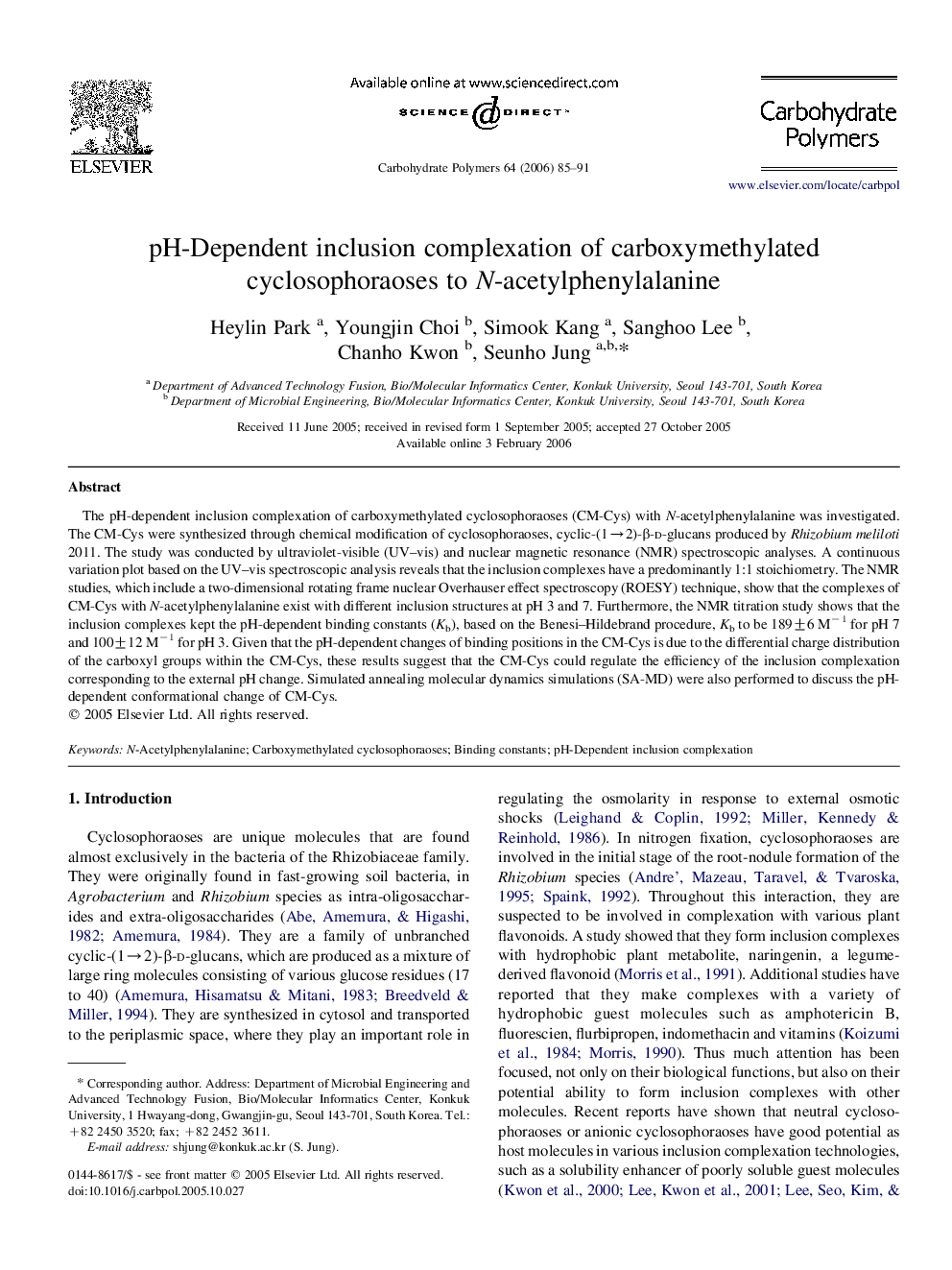| Article ID | Journal | Published Year | Pages | File Type |
|---|---|---|---|---|
| 1385553 | Carbohydrate Polymers | 2006 | 7 Pages |
Abstract
The pH-dependent inclusion complexation of carboxymethylated cyclosophoraoses (CM-Cys) with N-acetylphenylalanine was investigated. The CM-Cys were synthesized through chemical modification of cyclosophoraoses, cyclic-(1â2)-β-d-glucans produced by Rhizobium meliloti 2011. The study was conducted by ultraviolet-visible (UV-vis) and nuclear magnetic resonance (NMR) spectroscopic analyses. A continuous variation plot based on the UV-vis spectroscopic analysis reveals that the inclusion complexes have a predominantly 1:1 stoichiometry. The NMR studies, which include a two-dimensional rotating frame nuclear Overhauser effect spectroscopy (ROESY) technique, show that the complexes of CM-Cys with N-acetylphenylalanine exist with different inclusion structures at pH 3 and 7. Furthermore, the NMR titration study shows that the inclusion complexes kept the pH-dependent binding constants (Kb), based on the Benesi-Hildebrand procedure, Kb to be 189±6 Mâ1 for pH 7 and 100±12 Mâ1 for pH 3. Given that the pH-dependent changes of binding positions in the CM-Cys is due to the differential charge distribution of the carboxyl groups within the CM-Cys, these results suggest that the CM-Cys could regulate the efficiency of the inclusion complexation corresponding to the external pH change. Simulated annealing molecular dynamics simulations (SA-MD) were also performed to discuss the pH-dependent conformational change of CM-Cys.
Keywords
Related Topics
Physical Sciences and Engineering
Chemistry
Organic Chemistry
Authors
Heylin Park, Youngjin Choi, Simook Kang, Sanghoo Lee, Chanho Kwon, Seunho Jung,
